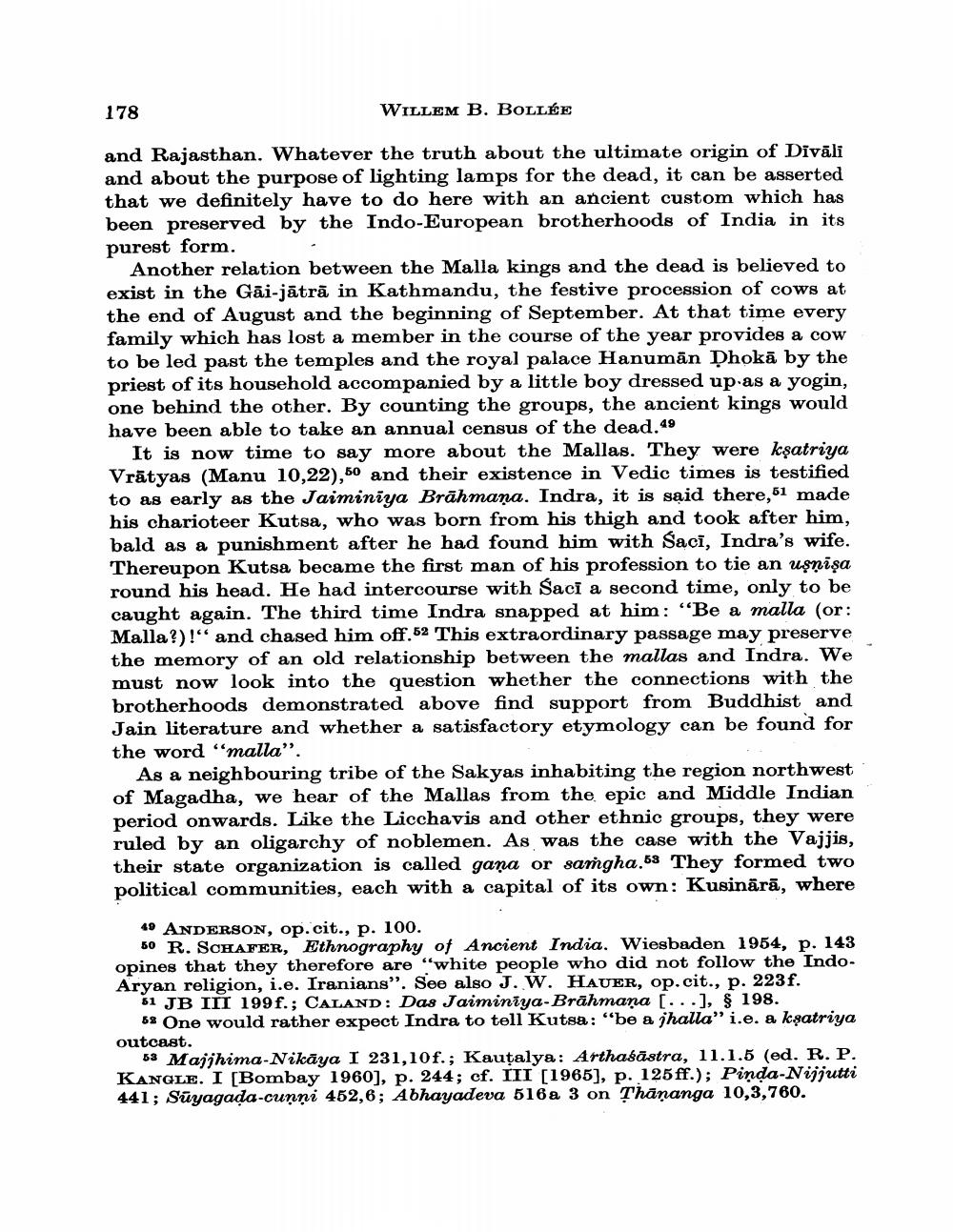Book Title: Indo European Sodalities In Ancient India Author(s): W B Bollee Publisher: W B Bollee View full book textPage 7
________________ 178 WILLEM B. BOLLÉE and Rajasthan. Whatever the truth about the ultimate origin of Divāli and about the purpose of lighting lamps for the dead, it can be asserted that we definitely have to do here with an ancient custom which has been preserved by the Indo-European brotherhoods of India in its purest form. Another relation between the Malla kings and the dead is believed to exist in the Gāi-jātrā in Kathmandu, the festive procession of cows at the end of August and the beginning of September. At that time every family which has lost a member in the course of the year provides a cow to be led past the temples and the royal palace Hanumān Dhokā by the priest of its household accompanied by a little boy dressed up as a yogin, one behind the other. By counting the groups, the ancient kings would have been able to take an annual census of the dead.49 It is now time to say more about the Mallas. They were ksatriya Vrātyas (Manu 10,22),50 and their existence in Vedic times is testified to as early as the Jaiminiya Brāhmaṇa. Indra, it is said there, 51 made his charioteer Kutsa, who was born from his thigh and took after him, bald as a punishment after he had found him with Saci, Indra's wife. Thereupon Kutsa became the first man of his profession to tie an uşnişa round his head. He had intercourse with Saci a second time, only to be caught again. The third time Indra snapped at him: "Be a malla (or: Malla?)!" and chased him off.52 This extraordinary passage may preserve the memory of an old relationship between the mallas and Indra. We must now look into the question whether the connections with the brotherhoods demonstrated above find support from Buddhist and Jain literature and whether a satisfactory etymology can be found for the word “malla”. As a neighbouring tribe of the Sakyas inhabiting the region northwest of Magadha, we hear of the Mallas from the epic and Middle Indian period onwards. Like the Licchavis and other ethnic groups, they were ruled by an oligarchy of noblemen. As was the case with the Vajjis, their state organization is called gana or saṁgha.58 They formed two political communities, each with a capital of its own: Kusinārā, where 40 ANDERSON, op.cit., p. 100. 50 R. SCHAFER, Ethnography of Ancient India. Wiesbaden 1954, p. 143 opines that they therefore are "white people who did not follow the IndoAryan religion, i.e. Iranians". See also J. W. HAUER, op.cit., p. 223f. 51 JB III 199f.; CALAND: Das Jaiminiya-Brahmana [...], 198. 53 One would rather expect Indra to tell Kutsa: “be a jhalla” i.e. a ksatriya outcast. 58 Majjhima-Nikāya I 231,10f.; Kautalya: Arthasästra, 11.1.5 (ed. R. P. KANGLE. I [Bombay 1960), p. 244; cf. III [1965], p. 125ff.); Pinda-Nijjutti 441; Süyagada-cunni 452,6; Abhayadeva 516 a 3 on Thānanga 10,3,760.Page Navigation
1 ... 5 6 7 8 9 10 11 12 13 14 15 16 17 18 19 20
